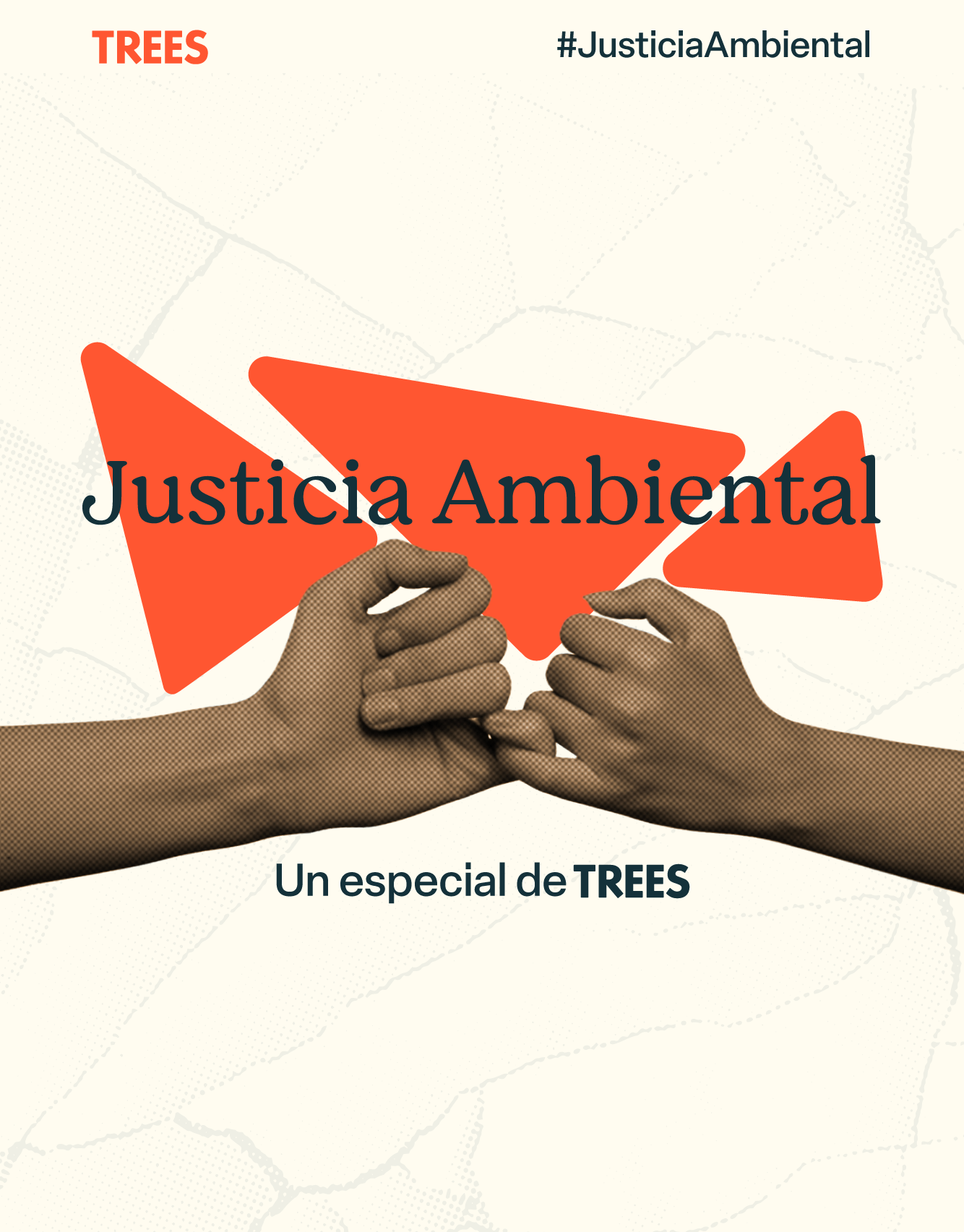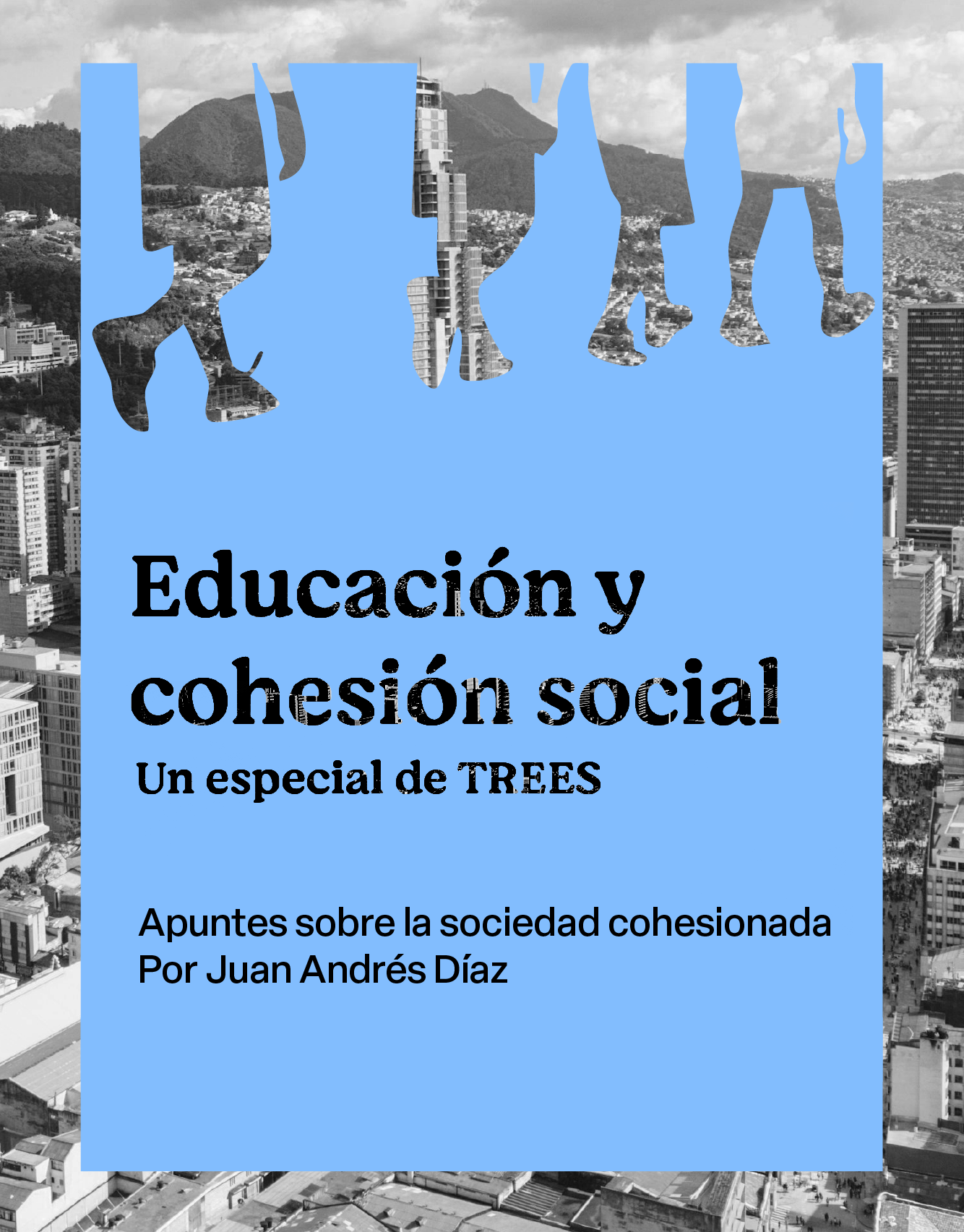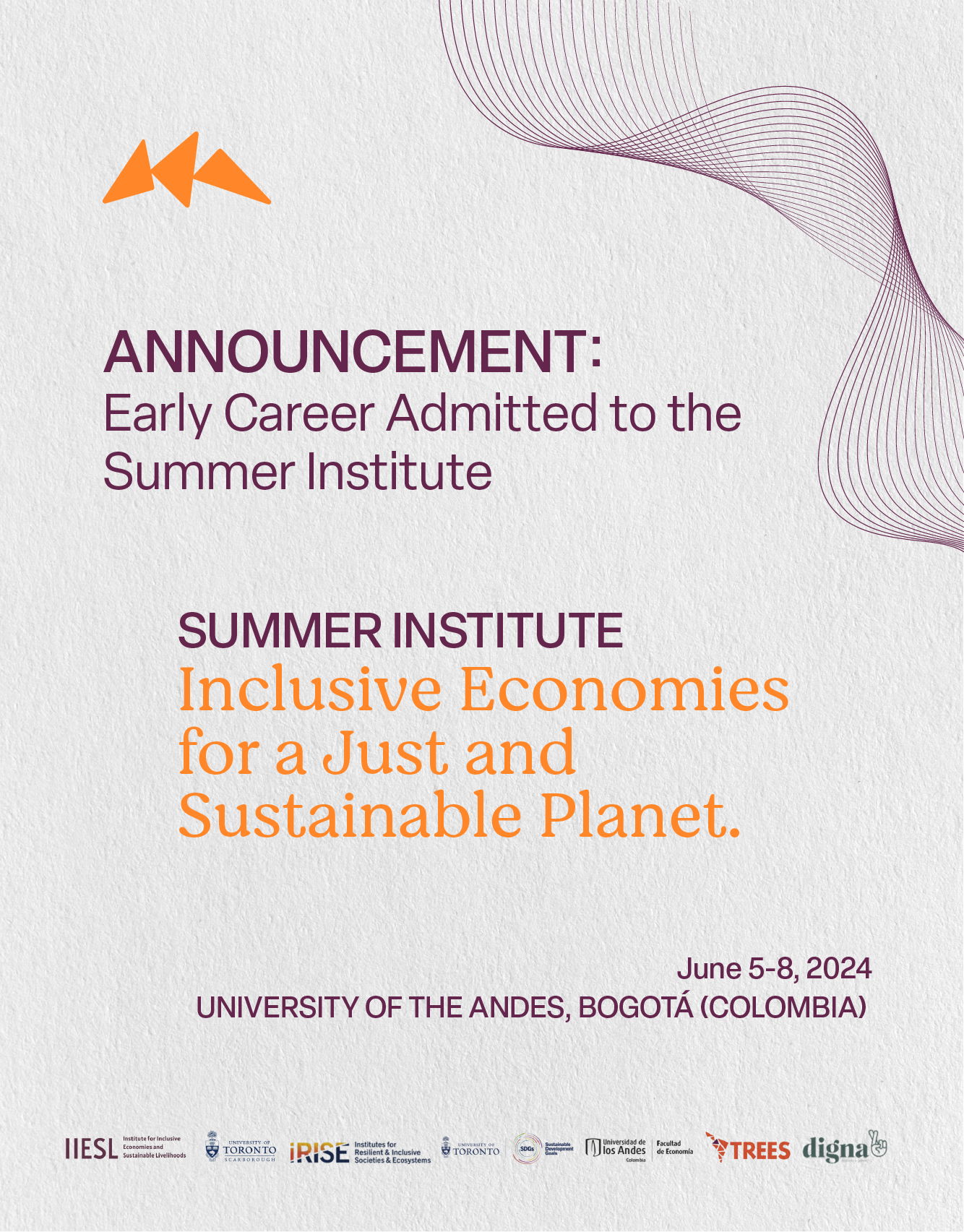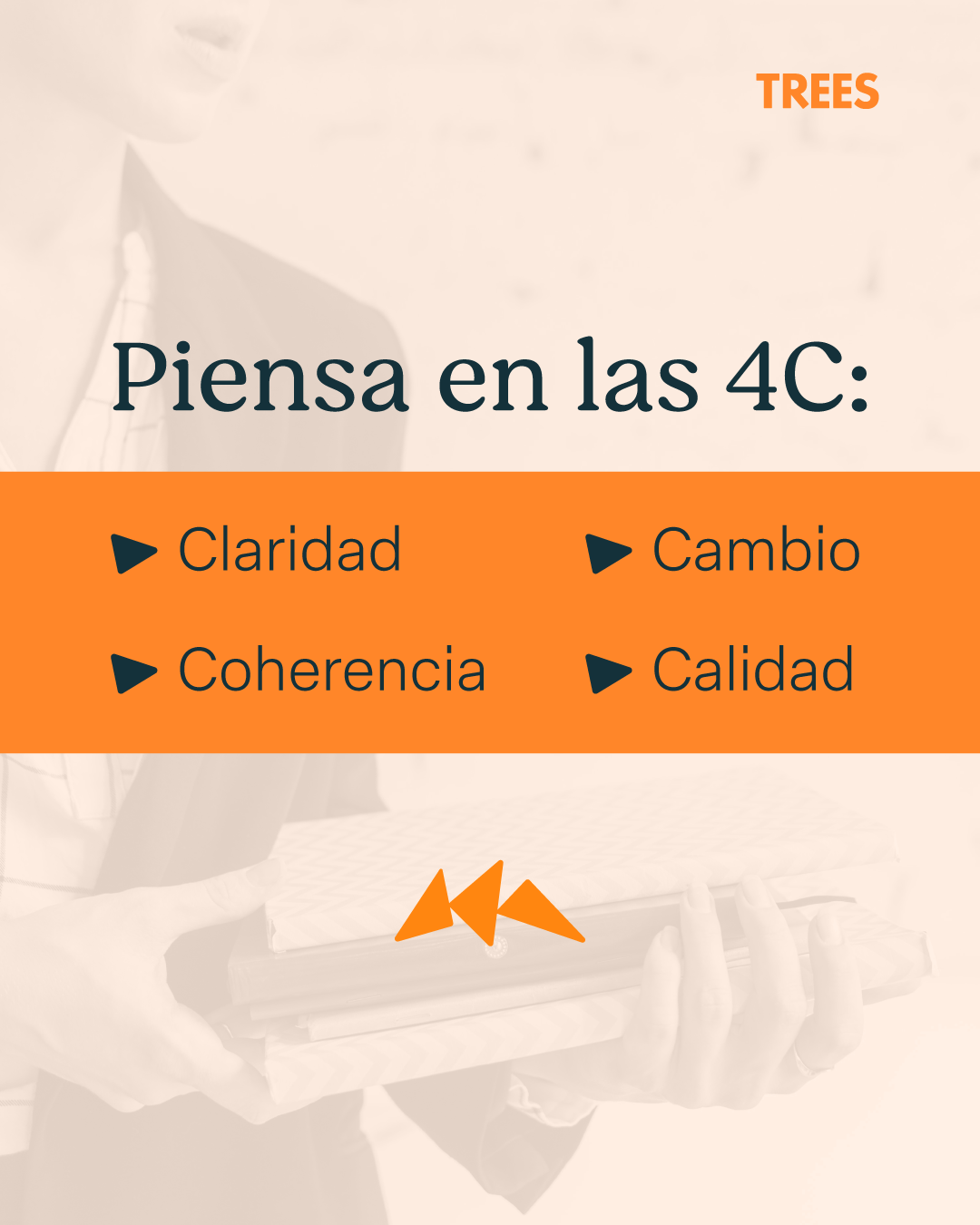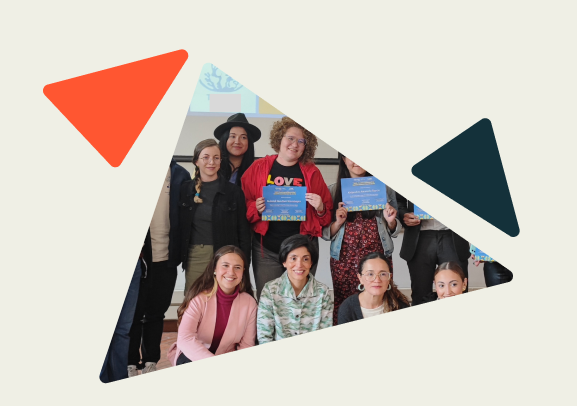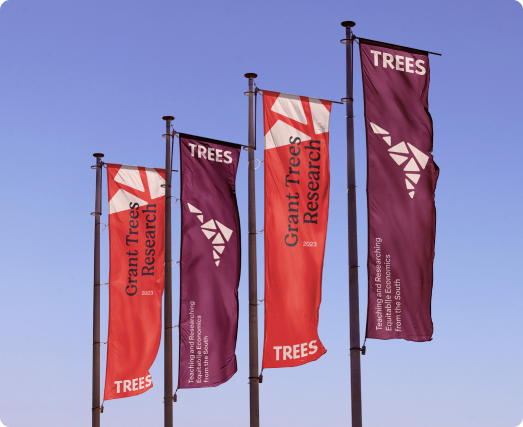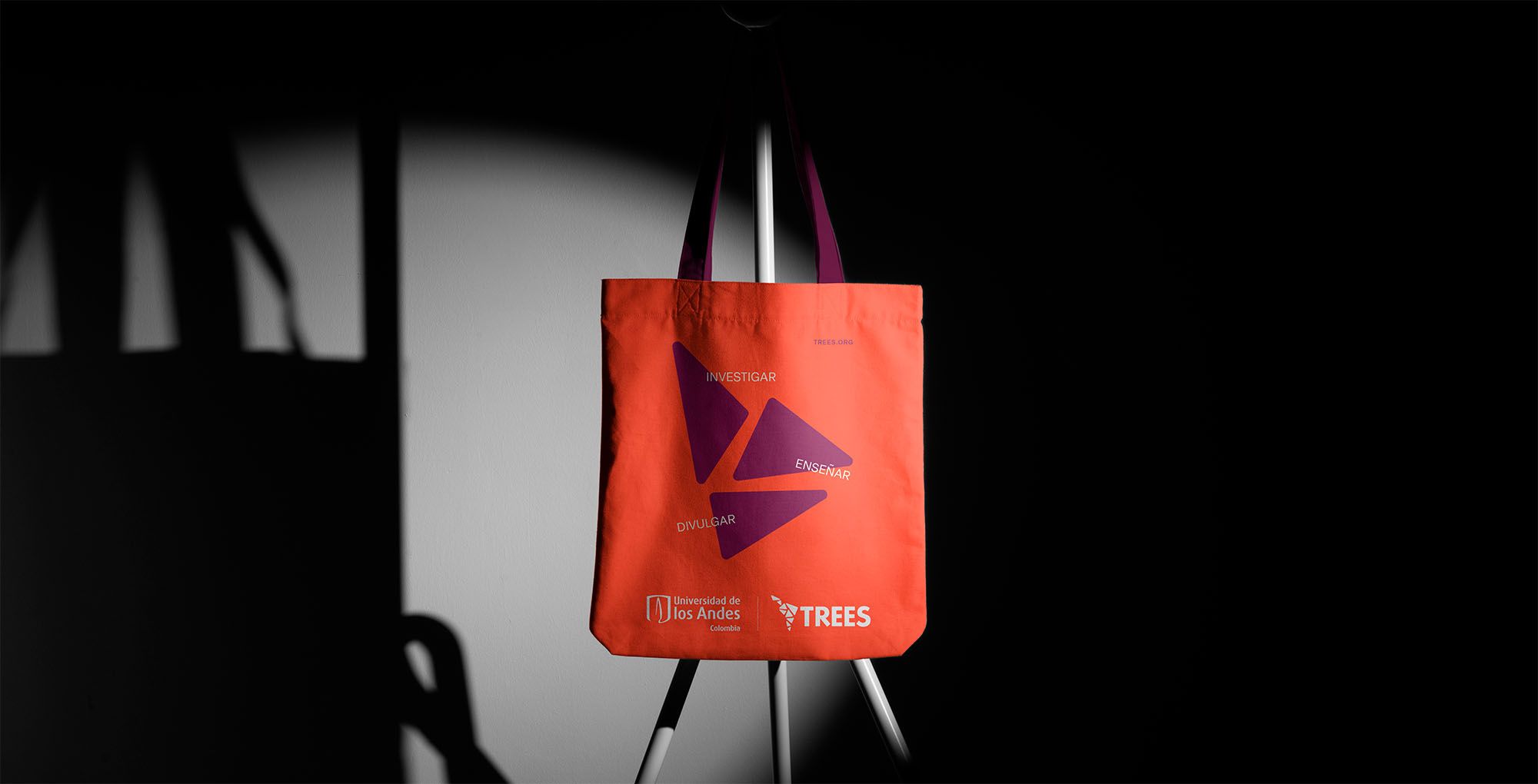From the establishment of TREES, the ongoing dialogue with other disciplines has been essential to discover diverse ways of generating and communicating economic knowledge. This is why, to build the initiative's brand (commonly known as brandingthere was a collaborative effort with the Faculty of Architecture and Design at Universidad de los Andes. The goal: inspire undergraduate and postgraduate students to craft the visual identity of the initiative. This was accomplished through a design competition launched on May 2, 2023.
El reto consistió en sacar del Word todos los aportes conceptuales que los tres creadores de la iniciativa, Leopoldo Fergusson, Jimena Hurtado y Juan Camilo Cárdenas, escribieron desde un punto de vista académico. Pero no solo eso: con este diálogo interdisciplinario se desafió la separación tradicional en la que se le otorga superioridad al conocimiento de una ciencia como la económica sobre el del diseño.
The lesson learned was discovering that the most powerful way to expand knowledge is by challenging the hierarchy of disciplines, understanding that each has valuable elements to contribute from its expertise. Jimena Hurtado, co-founder of the initiative and a member of the competition's judging panel, explains, 'The competition was a great learning experience about what we want to convey: how it reads, how it translates, what is the image, the energy, the feeling we want to offer. We learned about the design's ability to express these messages in a concise, powerful, and simultaneously beautiful way. Interdisciplinarity is one of TREES' essences, and this experience reaffirms that it does indeed work.'
This is how 27 students enrolled in the competition, delving into the history of TREES, its personality, how it feels, thinks, acts, and speaks, how it connects with its audience, and other aspects that allow brands to express their essence to connect with their target audience.
'When designers define a brand, we engage in a conscious exercise to build a perception that we want to communicate to the rest of the world,' explains Juliana Gómez, coordinator of "La Clinica"the project laboratory that conceptualized the competition and collaborated with the Faculty of Economics in its development and evaluation. This laboratory aims to influence the spatial, temporal, imaginary, and social construction of architecture and design through creative processes.
For Gómez, this competition is an example of how designers contribute to project development from the beginning, not just at the end, as is often the case: 'There's a belief that a designer adds value to a project in a final stage, in a decorative, aesthetic, and visual moment, but it's not considered how, from the outset, they can integrate into the process using their methodology. That's why, at Uniandes, design is conceived to formulate projects that have a high impact from the very beginning.'
With these motivations, the initiative approached professors Juliana Gómez and Roxana Martínez, coordinator of the Master's in Design at Universidad de los Andes, and involved students interested in enhancing and testing their skills. The competition had as its winning team for Brand DNA, Logo, and Mockups, Alejandra Ascencio and María Salomé Sánchez, students from the Master's in Design at Universidad de los Andes. And in the Graphic Universe category, Juliana Bejarano and Catalina Meléndez, students from the undergraduate program in Design at the Faculty of Architecture and Design, emerged victorious.
Ascencio and Sánchez's proposal began with a thorough study of the brief provided by TREES. The winners share that they focused on the triads proposed by the initiative: three pillars of work—research, teaching, and outreach; three prioritized values—justice, equity, and equality; and three system actors—economy, state, and society.
To these points, they added the goal of redefining the economy and the concept of spontaneous order, a relevant characteristic in the global South where those who inhabit the space self-organize due to the lack of state presence and inequalities.
This led to a graphic identity proposal in which, in addition to the logo, a standout element is an icon that depicts Latin America in irregular triangles (representing inequalities). For the brand colors, they chose a warm palette, prominently featuring the color red because, according to prevailing indicators, the global South is always 'in the red.' Its statistics often fall negatively compared to global indicators.
They appropriated what is considered negative and turned it around to reclaim the perspective that can only be provided from here, the global South, responding to a series of dynamics and perspectives that make the approach and analysis of inequalities unique.
For Juliana Gómez, the experience was highly enriching, especially for the students, who had the opportunity to engage with a client and receive feedback to strengthen their skills: 'I believe the value of this competition for students was that they could showcase their high, medium, or low skills in a real project, for real needs, with a real client. Moreover, they received feedback that was not speculative but 100% real.'
TREES will continue promoting interdisciplinary exercises to explore other possibilities for creative and useful processes. It aims to build spaces of trust where equal importance is given to how the world is seen from different disciplines and perspectives.
